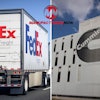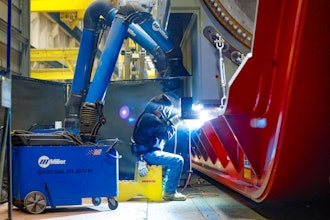Many companies still operate their businesses in the Stone Age, using paper-based processes. Not only are these processes slow and mistake prone, but they also commonly result in extra steps that can be eliminated through an automated process.
In the warehouse environment or assembly operations, paper-based systems prove very inefficient in terms of the picking process. Actual stock levels on products are often hours to days behind what they should be, potentially leading to stock-outs or causing production to come to a halt.
Paper-based picking systems use a printed pick list which is distributed to workers who travel to pick areas to pull the specified goods. The worker travels the warehouse looking for products in different locations until the entire list is picked. Throughput depends on how fast individual workers complete one order. In an assembly area, pick lists tell workers which part to use next in the assembly operation.
Slow Adoption in Distribution
From a Peerless Research Group survey, it is reported that “62 percent of DCs still use paper-based picking systems, nearly half of operations include RF-assisted/scan verification technologies. Parts-to-person, pick-to-light/scan verification and pick-to-voice (with and without scan verification) technologies are used in just 7-12 percent of operations in 2017, although those levels are a significant increase over the previous three years.”
So why are 62 percent of distribution centers still using paper-based picking systems? Adoption rates for new technologies are low because many people are afraid of or slow to change. Perceptions about cost and complexity keep companies from switching to automated systems. In warehouses, certain processes are being automated, but order picking lags behind.
Typically when a business starts out, orders are picked using paper processes because of the high level of investment required for automated processes. As businesses grow, the number of orders per day increase, the number of trips around the warehouse increase, and the pick path distance grows, making it impossible to continue picking this way. Businesses will invest in software and other equipment that will automate some or all of the order picking process.
Disadvantages of Paper-Based Picking
Paper-based processes are prone to error. Pickers with a printed pick list can easily pick the wrong item from a location that is adjacent or can mis-read the pick list and select the wrong SKU number. Or a product can be put in the wrong location, making it difficult to locate. When filling out forms, numbers may be transposed, leading to wrong order numbers, part numbers and quantities being picked.
To remedy this situation, time-consuming physical inventories are taken often in the warehouse, requiring even more man-power and adding to costs. Paper-based order picking is very inefficient, fraught with error and slow.
Automated Order Picking
The constant pressure to keep up with increased demand has driven a number of companies to automate order picking processes, leading to improved efficiency, accuracy and speed. Automated order picking involves various methods of bringing products to be picked right to the order picker, or closer to the pick face (in front of the order picker) for quicker picking. These systems include goods-to-person, pick shelves, carton flow, pallet flow, etc.
Goods-to-person (GTP) involves bringing items to be picked to the picker. Statistics show that order pickers spend 60 percent of their day traveling within the warehouse and only 40 percent picking. With GTP, traveling is reduced, even eliminated because products are brought to the picker via conveyors, automated storage and retrieval systems, mobile storage shelves or sortation devices as directed by the order management system or WMS. Pickers take the items, place them in containers to fulfill orders. Eliminating picker travel by bringing the goods to persons helps companies to increase productivity and improve efficiencies.
Pick shelves are angled metal shelves that allows items, boxes and containers to be stored. When the order picker takes the item closest to the pick face, the items behind slide forward, ready for the next pick. The first-in, first-out (FIFO) methodology of inventory rotation is perfect for pick shelves. With FIFO, the oldest products are used or picked first, ensuring product quality and safety. When products are picked for an order, newer arrived products slide forward from the back to replace the just-picked item. Pick shelves provides precise, flexible and accessible pick points for order pickers.
Carton flow racks store products that allow cartons to flow forward to be picked. Flow racks can be accessed by more than one picker at a time. Carton flow systems speed picking operations by putting items in an easily replenished FIFO system. Carton flow systems use skate wheel beds or roller lanes, and are flexible, portable and easy to expand. Some carton flow racks are made of heavy gauge steel so they are more durable than pipe and joint structures.
When choosing to automate picking operations, don’t just focus on the cost of the system; instead look into long-term maintenance, durability, flexibility and repair costs. Understand how easy or hard the system is to move and change; the easier and quicker the better. These systems should be able to be moved and expanded easily. Check the implementation, training and support processes to make sure everything works well and can be supported. Besides faster picking processes, better utilization of space, higher throughput and higher capacity should also be analyzed.
Brian C. Neuwirth is VP of Marketing and Sales at UNEX Manufacturing.





















